
"Chang 'an Thirty Thousand Miles" fire, netizen: Some culture has been engraved into our DNA
2023-07-18 09:12
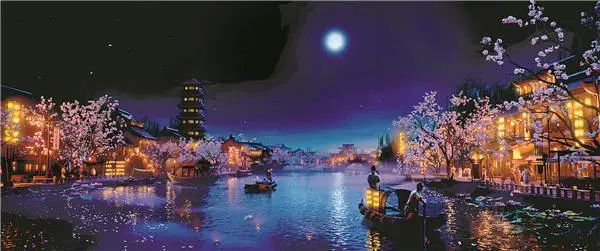
▲Chang'an, the longest Chinese animated movie, recreates the prosperity of the Tang Dynasty, showcasing the beautiful city of Yangzhou. [Photo provided to China Daily]

▲Li's confidant and poet Du Fu during childhood [Photo provided to China Daily]
Paths intertwine
Since its release on June 8, the movie has garnered a rating of 8.2 points out of ten on Douban, one of the country's largest review aggregators, consolidating its position as one of the highly acclaimed animated blockbusters of the summer season.
Despite Li and Du featured in a lot of movies and TV shows in past decades, the movie employs an unconventional perspective to grab viewers' attention from the start. It commences with the recollections of Gao Shi, also a renowned poet and confidant of Li, who chronicles the vicissitudes in the life of Li, who is probably the country's most beloved poet and whose name alone evokes legends.
In the movie, Li and Gao's paths intertwine when Li mistakenly identifies Gao as one of the thieves who stole his horse, unaware that Gao is leaving his rural hometown to pursue a government position in the capital city of the Tang empire. Their friendship spans decades, interweaving their personal journeys amid the dynasty's transition from peak prosperity to turmoil caused by a rebellion led by An Lushan, who was once one of Emperor Xuanzong's most trusted generals.
Aside from Li and Gao, the movie also features some of the most renowned poets and artists of the era, including Wang Changling, known for his military-themed poems, calligrapher Zhang Xu and palace musician Li Guinian, as well as then royal members who held significant influence within the literati circle, such as Princess Yuzhen.
Interweaving the personal fates of these figures, the film vividly reenacts the magnificent scenes of the Tang Dynasty. It showcases the bustling streets of ancient Chang'an, the vibrant and prosperous city of Yangzhou, as well as the harsh and snowy borderlands in Northwest China.
The movie also beautifully captures the nature of the Tang Dynasty. For instance, in the national civil service examination, the highest achievers are granted the privilege to ride magnificent horses and pluck the most exquisite flower from any residence in the capital city.
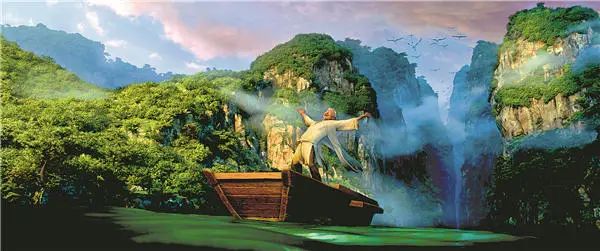
▲A scene features famous poet Li Bai.[Photo provided to China Daily]
There and then
"Jaivin's translation work began in the first half of last year. Despite her already extensive knowledge of Chinese culture, she found some poetry lines and place names to be quite challenging, requiring careful consideration and repeated contemplation," says Song Yiyi, the movie's producer, during an interview with China Daily.
Remaining loyal to the Tang Dynasty's artistic style was one of the production team's major guidelines in crafting the movie. Xie Junwei, who co-directed the movie alongside Zou Jing, explains the distinctive design approach was inspired by the dynasty's sculptures, figurines and mural paintings showcased in museums.
In early July 2021, the creators traveled to the major historical sites depicted in the movie, including various places in Tongguan county in Shaanxi province, where general Geshu Han resisted the rebellious forces, to Yellow Crane Tower in Wuhan, Hubei province, a culturally significant landmark which has been celebrated in numerous poems.
Zou adds that when he stood on the high floor of an ancient building in Tongguan, overlooking the vast and distant land, he suddenly had a feeling of transcending time. It was as if he could see Geshu, old and frail, suffering from illness more than 1,000 years ago, trembling beside him. This experience helped the director understand the helplessness and anguish that Geshu faced when confronted with the formidable force arrayed against him.
The rigorous preparations for the movie included reading materials from more than 100 ancient archives, documents and relevant books. The movie features a total of 48 poems, with Li Bai's masterpiece, Qiang Jin Jiu (Invitation to Wine), at the heart of the most visually stunning scene.
The poem was composed in the year 744. At that time, Li Bai was defamed by a powerful courtier, which led to him losing the favor of the emperor. Consequently, he was compelled to leave Chang'an and wandered in the mountains with a few close friends as a means to alleviate his sadness at being unappreciated despite his great talent.
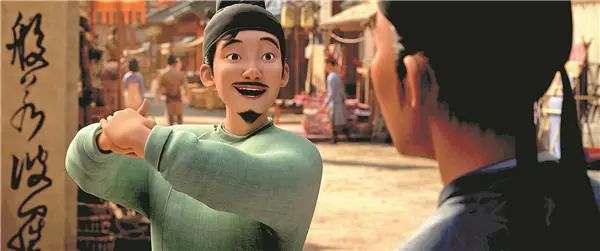
▲Du in his adulthood [Photo provided to China Daily]
Figures and works
The movie marks the latest effort of Light Chaser Animation Studios, a Beijing-based company specializing in works inspired by domestic culture and history. Its previous blockbusters include the White Snake franchise and New Gods: Yang Jian.
Song, the producer, reveals Chang'an is the first installment of a new franchise titled New Culture, which aims to reinterpret historical figures and classic works through the medium of animation.
"For most Chinese people, the Tang Dynasty represents one of the most illustrious chapters in our nation's cultural history. This era has profoundly shaped our cultural heritage, with Tang poetry playing a significant role," explains Song.
"Therefore, it was only natural for us to immediately consider Li Bai as the protagonist for the first movie in our franchise," she adds.
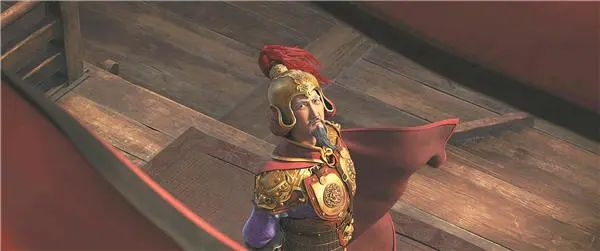
▲The dynasty's renowned general Geshu Han.[Photo provided to China Daily]
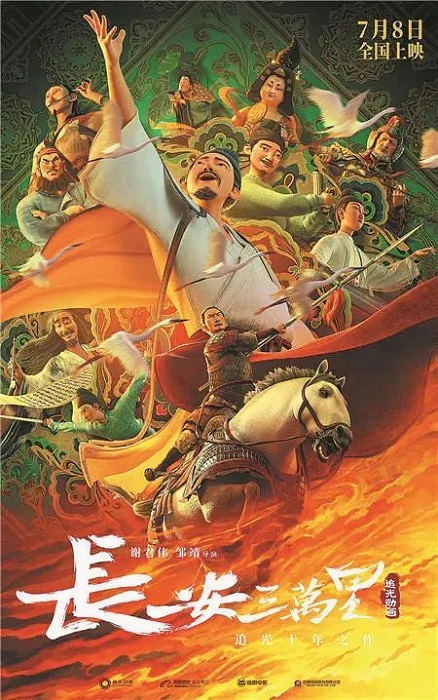
▲A poster of Chang'an [Photo provided to China Daily]
"We hope that after watching this film, foreign audiences will discover that there was such a dynasty in China where poets could passionately create poetry, capturing the landscapes and the joys and sorrows of that era within their verses. We also hope that more foreign viewers will develop a deeper curiosity about Chinese poets such as Li Bai and Du Fu," he says.
Reporter: Xu Fan








